UPDATE: Wool’s BLUE FOOL sold on Nov. 17 for $950,000 before fees. FOOL Facsimile Object is no longer available, thank you all for your engagement.
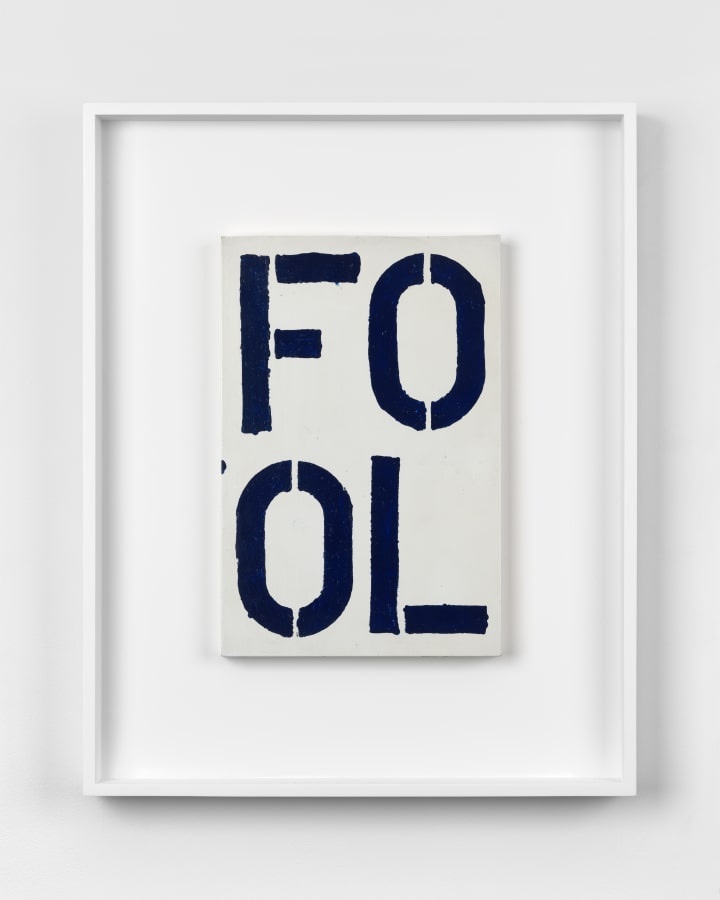
Kenny Schachter is selling a sweet little Christopher Wool painting [update: it’s now at Phillips] that once belonged to Glenn O’Brien. It was a gift from the artist. The way Die Zeit heard O’Brien describe it in a 2014 puff piece, it was the priceless first prototype of Wool’s most famous body of work.
What O’Brien probably said was that it was a study for the giant four-letter enamel on panel paintings Wool made in 1990. Because he’d been making stencil-style text paintings since around 1987, when he’d famously said he was inspired by seeing
SEX
LUV
freshly stenciled on a white panel truck by a graffiti artist in the East Village.
The way Kenny tells the story, is that he was reminded of FOOL–which he bought from O’Brien in 2015–when he saw a similarly tiny text-on-aluminum Wool painting in a backroom at Miami Basel. It was $900,000, but was actually worth more like $2.5 million; a bargain even for Wool, who apparently bought it back.
If you are in the market for that piece–and you’d be a FOOL not to be; it is at once important, fantastic, and adorable–then you need read no further. You are set. You are good to go, and godspeed you. Despite his recent NFT hijinks, Kenny still loves that fiat money, and has surely earned this deal the hard way, on those mean Miami streets. Go cash him out. From here the discussion turns away from mad money and toward Facsimile Objects.
I’ve been trying to figure out what Facsimile Objects do. At first they were created not as a substitute for an artwork, but as a tool for an experience: the impossible experience of seeing an artwork IRL. Paul Soulellis suggested the term “viewer prosthetics.” The other day he tweeted, “I feel like maybe we’re starting to see all physical art (and books?) as prosthetic stand-ins for digital experiences.”

A couple of unsuccessful facsimile objects make me think he’s onto something. In one, of a Danh Vo photogravure called Caritas, which was in a show I couldn’t see in London last fall, the glossy aluminum image failed to capture the layered effect Vo achieved by etching his father’s calligraphic script onto the glazing. Also it was way too big. Facsimile object have a handheld sweetspot, where they feel like iPads, or, more precisely, like the prop computer tablets in Star Trek: The Next Generation on which iPads would one day be based. So they don’t just stand in for handheld artworks–coddling a Manet or a Dürer is not the experience we’re missing-they also approximate the haptic experience of seeing that artwork on a tablet. They are what they are: full-scale prints of digital images of paintings.
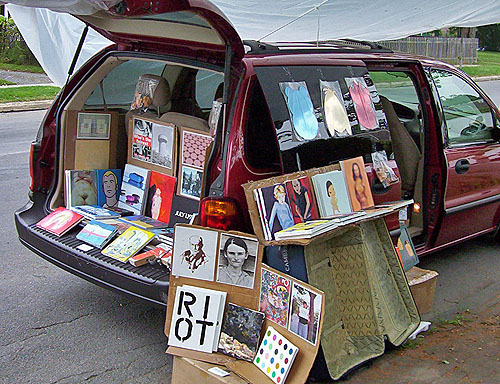
Except when they’re not. Because I’ve also found that making a Facsimile Object of Christopher Wool’s FOOL didn’t work. It felt too much like a bootleg. Specifically, it felt like an Eric Doeringer bootleg, a portable painting series he’s been exploring successfully for twenty years. [Successfully not counting the ones which artists deploy lawyers to object to.]
Then as I wondered if a painting could be a facsimile object, or vice versa, I unpacked this laser-cut stencil-like object, and the tweets of Sal Randolph flashed into my mind: are facsimile objects a “return of the aura in a new form?”
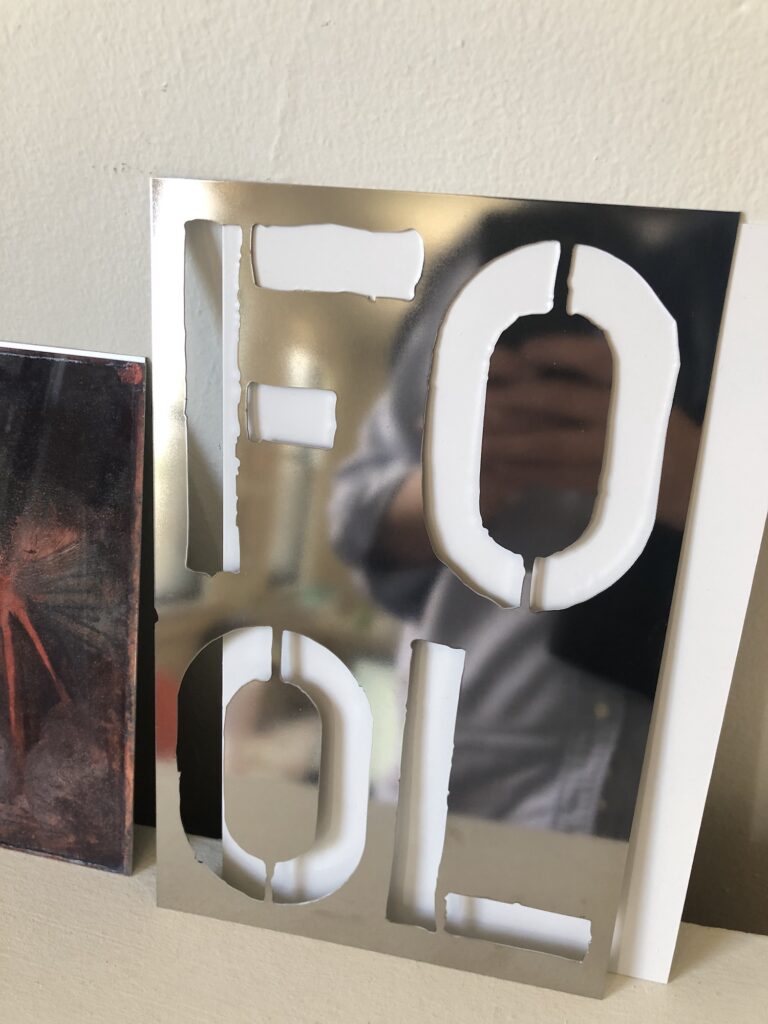
Suddenly there was this thing, and it referred to this other thing, but yet it was not a facsimile of the Wool painting, but perhaps a facsimile of an implied, intermediate object, an interpolation of a tool. And rather than serve as just a prosthetic for a viewer, it also becomes a prosthetic for the producer, a facsimile of the experience of the artist. But there’s still that mirror: what do you see yourself doing?
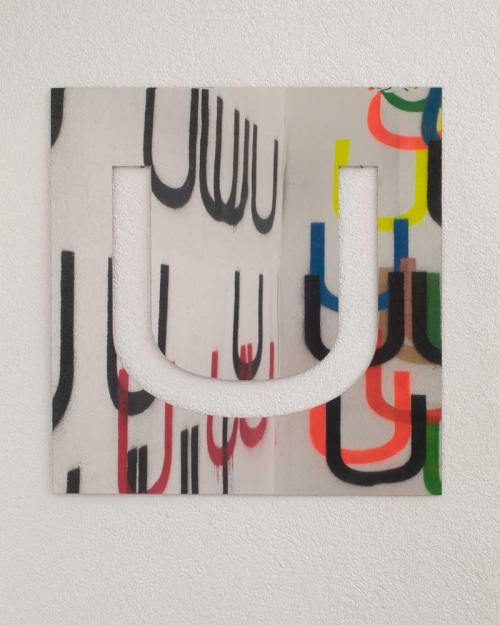
When Wade Guyton made a stainless steel benefit edition [six months later update: website rip] for the Geneva not-for-profit gallery Hard Hat in 2006, there was still a real chance it’d get used as a stencil, if only because it was reversible–you could have a paint side and a mirror side. Also because it was called U Stencil.
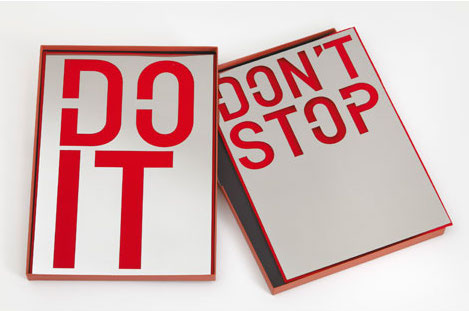
But by 2012, when Rirkrit Tiravanija made a stencil diptych fundraising edition for the ICI, and DEFINITELY when he made one for the Beyeler in 2018, the idea of actually spraying paint on these shiny objects became more hypothetical, or rather, conceptual.
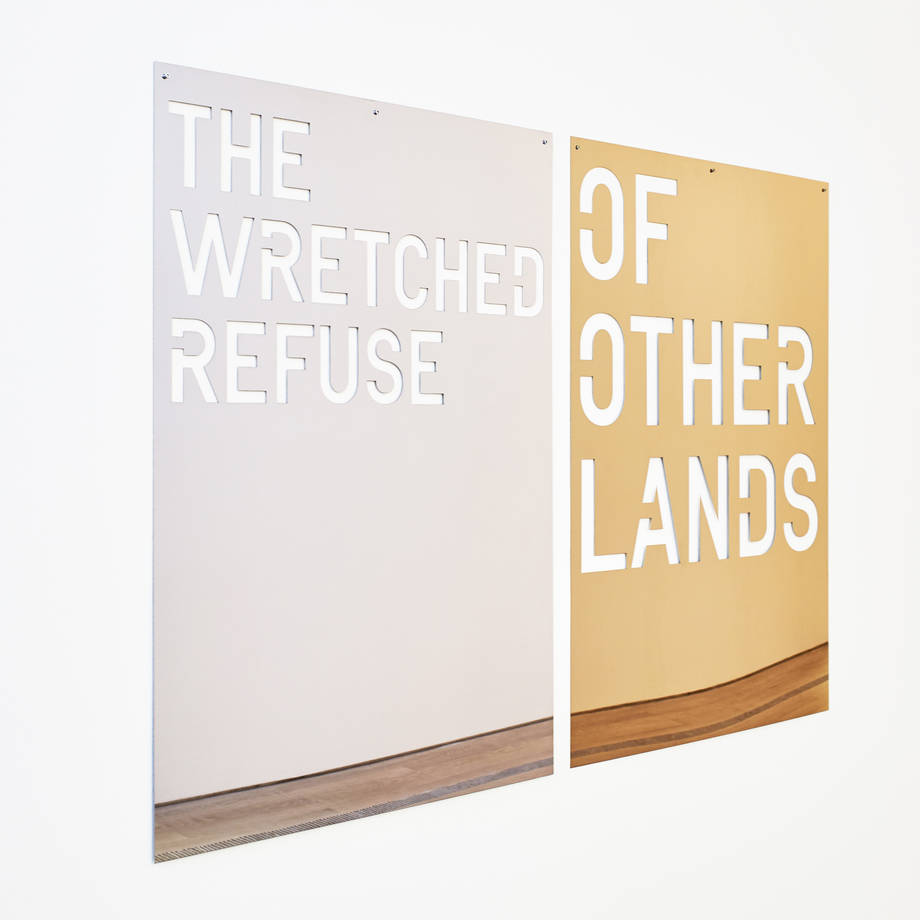
So how does this Facsimile Object, nominally titled W1, play out? It does look rather stencilish. It is a lasercut FOOL in 11.5 x 7.5 inch polished stainless steel, accompanied by a 1:1-scale certificate of authenticity, realized in hand-finished enamel on aluminum. It is delivered in an envelope of hand-stitched flannel.
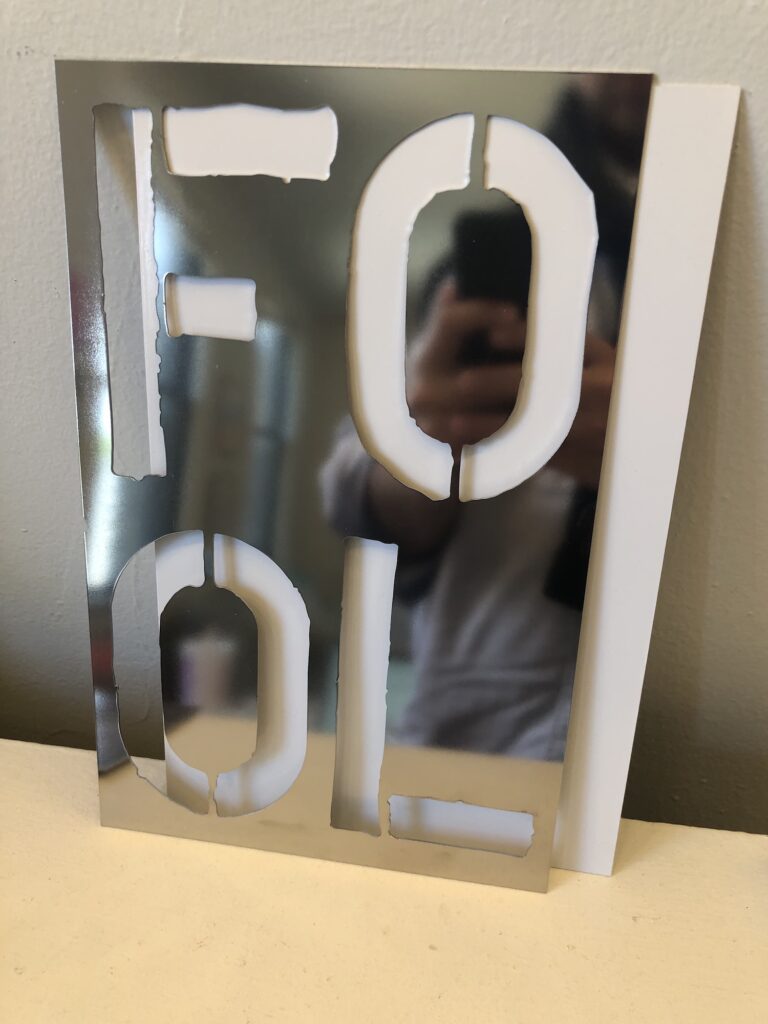
Given its ridiculously low price, compared to the Tiravanijas and Guytons, never mind Kenny’s Wool, it’s not impossible to imagine some money burner out there treating it as a FOOL stencil painting kit. I would like to think, though, that when you take FOOL out of the envelope, the dazzling beauty of your reflection in the surface of this stencil-shaped object, this facsimile of a stencil, will inspire you to keep it just as it is. Or at least to break out the paint thinner after you’re done.
This Facsimile Object is available as an edition of 10 plus 2 artist proofs, or until Kenny’s Wool sells, whichever comes first.
[NOV 2021 UPDATE: Schachter has consigned Blue Fool to Phillips, where it sold on Nov. 17, which will be the last moment these Facsimile Objects will be available. Unless the last couple sell before then, of course. Thank you for your engagement!]
